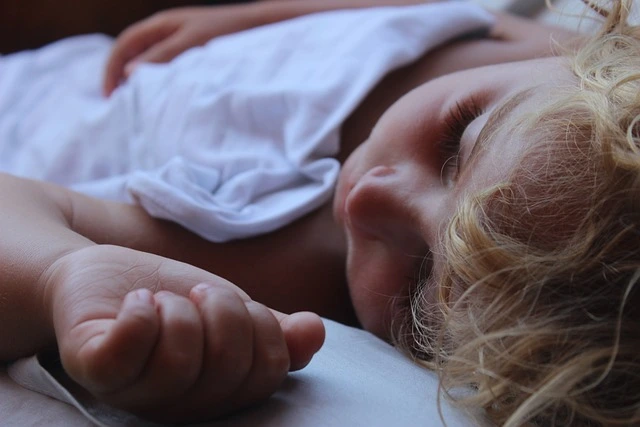A common question that arises in sleep research and among the general public is: Is dreaming a sign of deep sleep? This article aims to explore this question by examining the different stages of sleep, particularly focusing on deep sleep (NREM Stage 3), and reviewing current research and statistics. Understanding whether dreaming is predominantly associated with deep sleep or other sleep stages is essential for advancing sleep research and improving sleep-related health outcomes.
Sleep is a vital component of physical and mental health, playing a crucial role in restoration, memory consolidation, and emotional regulation. It consists of several stages, broadly categorized into non-rapid eye movement (NREM) and rapid eye movement (REM) sleep. Dreams, an intriguing and often mysterious aspect of sleep, have been the subject of extensive research to understand their occurrence and significance.
Understanding Sleep Stages
Overview of the Sleep Cycle
The sleep cycle consists of NREM and REM sleep, each playing a crucial role in overall sleep health. To address the question, “Is dreaming a sign of deep sleep?,” we must explore each stage in detail.
NREM Stage 1
NREM Stage 1 marks the transition between wakefulness and sleep. This light sleep phase involves the slowing of muscle activity and slow eye movements. During this stage, the brain produces high amplitude theta waves, which are slow brain waves. Although this stage is relatively short, lasting only a few minutes, it sets the stage for deeper sleep. Some light, fleeting dreams can occur, but they are often less vivid and less memorable. Thus, it is unclear whether this stage can answer the question: is dreaming a sign of deep sleep?
NREM Stage 2
NREM Stage 2 represents the onset of true sleep, where the body prepares to enter deep sleep. This stage is characterized by sleep spindles, which are bursts of rapid, rhythmic brain activity, and K-complexes, which are large waves that react to external stimuli. NREM Stage 2 constitutes about 50% of a typical night’s sleep. Dreams can occur in this stage, though they are usually less complex and more fragmented than those in REM sleep. The question, “is dreaming a sign of deep sleep,” remains complex as dreams here differ from those in deeper sleep stages.
NREM Stage 3
NREM Stage 3, also known as deep sleep or slow-wave sleep, is characterized by delta waves, which are the slowest brain waves. This stage is crucial for physical restoration, muscle repair, and the release of growth hormones. It is during NREM Stage 3 that the body undergoes significant restorative processes. Dreams in this stage tend to be less frequent but can be more profound and less narrative-driven.
REM Sleep
REM Sleep is the stage where rapid eye movement occurs, and the brain shows activity levels similar to wakefulness. REM sleep typically begins about 90 minutes after falling asleep and recurs multiple times throughout the night, with each phase lasting longer than the previous one. During REM sleep, the body experiences temporary muscle paralysis, preventing us from acting out our dreams. This stage is most commonly associated with vivid dreaming, emotional processing, and memory consolidation. Given the prominence of dreams in this stage, one might conclude that the answer to “is dreaming a sign of deep sleep” leans towards REM sleep rather than NREM Stage 3.
Analysis of REM and NREM Sleep Proportions
In a typical sleep cycle, REM sleep accounts for 20-25% of total sleep, while NREM sleep, including deep sleep, makes up the rest. Understanding these proportions is essential to address whether dreaming is a sign of deep sleep. REM sleep is crucial for vivid dreaming, while NREM stages, particularly deep sleep, support different types of dreams.
Understanding Sleep Stages
Dreams During Deep Sleep (NREM Stage 3)
NREM Stage 3, or deep sleep, features delta waves, the slowest and highest amplitude brain waves. This stage is crucial for physical restoration, growth, immune function, and energy replenishment. Dreams during deep sleep are less frequent and less vivid than REM sleep dreams.
In deep sleep, dreams are more abstract and fragmented. They often include disjointed images or feelings rather than coherent stories. This raises the question: is dreaming a sign of deep sleep? While dreams occur, they are less vivid and structured compared to REM sleep dreams.
Comparison of Dream Characteristics
Several distinct differences emerge when comparing dreams from deep sleep to REM sleep. REM sleep dreams are vivid, emotionally charged, and highly narrative, involving complex interactions and detailed imagery. In contrast, deep sleep dreams are more mundane and less memorable.
Deep sleep dreams are less colorful and emotionally intense. They may involve simple scenes or repetitive thoughts rather than intricate plots. This distinction is crucial for understanding whether dreaming is a sign of deep sleep. While dreams occur in deep sleep, they are not as rich or vivid as REM dreams, suggesting that vivid dreaming is more characteristic of REM sleep.
Importance of Deep Sleep
Despite the less vivid nature of dreams in deep sleep, this stage is vital for overall health. Deep sleep is when the body undergoes significant physical restoration, including tissue repair, muscle growth, and protein synthesis. It also consolidates declarative memories, related to facts and information.
The restorative functions of deep sleep are essential for maintaining health and well-being. While dreams in this stage may not be as vivid or memorable as those in REM sleep, the processes during deep sleep are vital for physical and mental recovery.
Impact of Sleep Disorders on Deep Sleep Dreams
Sleep disorders significantly impact the quality and quantity of deep sleep and, consequently, the nature of dreams during this stage. Disorders such as insomnia and sleep apnea can reduce the amount of deep sleep, leading to increased fatigue and health issues. These conditions also affect dream frequency and vividness.
Individuals with sleep apnea experience frequent awakenings during the night, disrupting deep sleep continuity. As a result, they may have fewer dreams or remember them less clearly. This disruption can affect the overall assessment of whether dreaming is a sign of deep sleep, as sleep continuity and quality are compromised.
If you wish to understand the meaning of your dreams and their influence on your body and wellbeing , use the Self: Dream Analysis app


